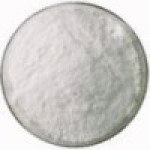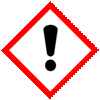CAS Number 100986-85-4 Anhydrous or 138199-71-0 Hemihydrate, Levofloxacin Hemihydrate Anhydrous Hydrate BP Ph Eur EP JP IP USP Grade Manufacturers Exporters







CAS Number 100986-85-4 Anhydrous or 138199-71-0 Hemihydrate, Levofloxacin Hemihydrate Anhydrous Hydrate BP Ph Eur EP JP IP USP Manufacturer Exporter
For Properties Specifications of Levofloxacin Hemihydrate Anhydrous Hydrate Click Properties, Specifications of Levofloxacin Hemihydrate Anhydrous Hydrate Manufacturer.
For Uses of Levofloxacin Hemihydrate Anhydrous Hydrate Click Uses of Levofloxacin Hemihydrate Anhydrous Hydrate Manufacturer.
For For SDS MSDS Sheet of Levofloxacin Hemihydrate Anhydrous Hydrate Click SDS Safety Data Sheet MSDS Sheet of Levofloxacin Hemihydrate Anhydrous Hydrate Manufacturer.
The Properties and Specifications of Levofloxacin Hemihydrate Anhydrous Hydrate:
Levofloxacin USP Grade Specifications:
C18H20FN3O4-½ H2O --- 370.38
7H -Pyrido[1,2,3-de]-1,4-benzoxazine-6-carboxylic acid, 9-fluoro-2,3-dihydro-3-methyl-10-(4-methyl-1-piperazinyl)-7-oxo-hydrate (2:1), (S)-;
(−)-(S)-9-Fluoro-2,3-dihydro-3-methyl-10-(4-methyl-1-piperazinyl)-7-oxo-7H -pyrido[1,2,3-de]-1,4-benzoxazine-6-carboxylic acid, hemihydrate CAS 138199-71-0
Anhydrous 100986-85-41
UNII: 6GNT3Y5LMF
UNII: RIX4E89Y14
DEFINITION
Levofloxacin contains NLT 98.0% and NMT 102.0% of C18H20FN3O4, calculated on the anhydrous basis.
IDENTIFICATION
A. Infrared Absorption
B. The retention time of the major peak of the Sample solution corresponds to that of the Standard solution, as obtained in the Assay.
Residue on Ignition: NMT 0.2%. Use a platinum crucible.
Organic Impurities, Procedure 1: To pass the test by chromatography.
Organic Impurities, Procedure 2: To pass the test by chromatography.
Organic Impurities, Procedure 3: To pass the test by chromatography.
Optical Rotation, Specific Rotation:
Solvent: Methanol.
Sample solution: 5 mg/mL in Solvent.
Acceptance criteria: −92° to −106°, at 20C.
Water Determination: 2.0%–3.0%
We also manufacture Levofloxacin BP EP JP IP grade.
The Uses of Levofloxacin Hemihydrate Anhydrous Hydrate:
Levofloxacin is a broad-spectrum antibiotic, and it is used to treat a number of bacterial infections.The MSDS-SDS Hazard Statement of Levofloxacin Hemihydrate Anhydrous Hydrate:
Levofloxacin SDS, Safety Data Sheet
MSDS Sheet, Material Safety Data Sheet 05-Nov-24
1. Product Identification
Product Name & Other Names: Levofloxacin.
CAS No.: 100986-85-4 Anhydrous or 138199-71-0 Hemihydrate.
EINECS EC Number: 600-146-0
Relevant uses and uses advised against (if any): Oil & Gas Wells fracturing and Industrial Manufacturing.
Suppliers: As per letterhead.
2. Hazards Identification
GHS, Globally Harmonized System Classification in accordance with 29 CFR 1910
Classification according to Regulation (EC) No 1272/2008
Acute toxicity, Oral (Category 4), H302
Skin sensitization (Category 1), H317
Respiratory sensitization (Category 1), H334
Labeling according to GHS USA & Regulation (EC) No 1272/2008
GHS Label Elements  Harmful |
GHS Label Elements |
Signal Words: Danger
Hazard statements:
H302: Harmful if swallowed.
H317: May cause an allergic skin reaction.
H334: May cause allergy or asthma symptoms or breathing difficulties if inhaled.
Precautionary statements:
P260: Do not breathe dust/fume/gas/mist/vapors/spray.
P270: Do not eat, drink or smoke when using this product.
P271: Use only outdoors or in a well-ventilated area.
P280: Wear protective gloves/protective clothing/eye protection/face protection.
P285: In case of inadequate ventilation wear respiratory protection.
P314: Get medical advice/attention if you feel unwell.
P301+P312: IF SWALLOWED: Call a POISON CENTER or doctor/ physician if you feel unwell.
P302+P352: IF ON SKIN: Wash with plenty of soap and water.
P304+P340: IF INHALED: Remove victim to fresh air and keep at rest in a position comfortable for breathing.
P305+P351+P338: IF IN EYES: Rinse cautiously with water for several minutes. Remove contact lenses, if present and easy to do. Continue rinsing.
P332+P313: If skin irritation occurs: Get medical advice/attention.
P337+P313: If eye irritation persists: Get medical advice / attention.
3. Composition/Information on Ingredients
Product Name & Other Names: Levofloxacin.
CAS No.: 100986-85-4 Anhydrous or 138199-71-0 Hemihydrate.
EINECS EC Number: 600-146-0
4. First Aid Measures
Always seek medical attention after first aid measures are provided.
Inhalation: If is inhaled, remove to fresh air. If not breathing, give artificial respiration. If breathing is difficult, give oxygen and get medical attention immediately.
Ingestion: Do not induce vomiting unless as directed by medical personnel. Never give anything by mouth to an unconscious person. Get medical attention.
Skin Contact: Immediately flush skin with plenty of water for at least 15 minutes while removing contaminated clothing and shoes. Get medical attention.
Eye Contact: Remove contact lenses. Immediately flush your eyes with plenty of water for at least 15 minutes, lifting lower and upper eyelids occasionally. Get medical attention immediately.
Notes to Physician: Treat symptomatically and supportively.
5. Fire Fighting Measures
Fire: As with most organic solids, fire is possible at elevated temperatures or by contact with an ignition source.
Special hazards arising from the substance: Carbon oxides, Nitrogen oxides (NOx), Fluorine compounds and Fumes.
Explosion: Fine dust dispersed in air in sufficient concentrations, and in the presence of an ignition source is a potential dust explosion hazard.
Fire Extinguishing Media: Water spray, dry chemical, alcohol foam, fog or carbon dioxide. Avoid solid water jet as it can scatter the fire.
Products of Combustion: These products are fumes and carbon oxides (CO, CO2).
Special Information: In the event of a fire, wear full protective clothing and NIOSH-approved self-contained breathing apparatus with full face piece operated in the pressure demand or other positive pressure mode. At high temperatures under fire conditions, it may produce toxic or irritating fumes. Fire-extinguishing work is done from the windward and a suitable fire-extinguishing method according to the surrounding situation is used.
6. Accidental Release Measures
Personal precautions, protective equipment, and emergency procedures: Avoid breathing dust/fumes/gas/mist/vapors/spray. Use individual protective equipment (waterproof boots, suitable protective clothing, safety glasses, etc.).
Environmental precautions: Do not let the product enter drains, soil, or water sources.
Methods and materials used for containment cleanup procedures and Storage:
Small Spill: Use appropriate tools to put the spilled solid in a convenient waste disposal container.
Large Spill: Corrosive solid. Do not inhale dust, vapors, mist, or gas. Avoid dust formation. Contain spilled material. Cover with an inert, non-combustible absorbent material, (e.g., sand, earth, diatomaceous earth, vermiculite). Use a shovel to put the material into a convenient waste disposal container.
7. Handling and Storage
Precautions for safe handling: Apply according to good manufacturing and industrial hygiene practices. Ensure proper ventilation. In case of insufficient ventilation, wear suitable respiratory equipment. Wash thoroughly after handling. Do not drink, eat, or smoke while handling. Avoid contact with skin, eyes, and clothing. Minimize dust generation. Avoid breathing dust/fumes/gas/mist/vapors/spray. Keep container tightly closed. Avoid ingestion and inhalation. Use individual protective equipment (waterproof boots, suitable protective clothing, safety glasses, etc.).
Conditions for safe storage, including any incompatibilities: Store in cool, dry, and ventilated area away from heat sources and protected from sunlight in tightly closed original container. Keep air contact to a minimum. Store protected from heat, sparks and ignition sources and incompatible materials. Avoid contact with skin and eyes. Avoid inhalation of dust/mist/vapor. Do not store with incompatible materials like strong oxidizing agents. Room Temperature. Light Sensitive.
8. Exposure Controls/Personal Protection
Airborne Exposure Limits: This product does not contain any hazardous materials with occupational exposure limits established by the region-specific regulatory bodies.
Ventilation System: A system of local and/or general exhaust is recommended to keep employee exposures as low as possible.
Personal Respirators (NIOSH Approved): For conditions of use where exposure to dust or mist is apparent and engineering controls are not feasible, a particulate respirator (NIOSH type N95 or better filters) may be worn. If oil particles (e.g., lubricants, cutting fluids, glycerin, etc.) are present, use a NIOSH type R or P filter.
Skin Protection: Wear impervious protective clothing, including boots, gloves, lab coat, apron or coveralls, as appropriate, to prevent skin contact.
Eye Protection: Use chemical safety goggles and/or full-face shield where dusting or splashing of solutions is possible. Maintain eye wash fountain and quick-drench facilities in work area.
Other Control Measures: Maintain good housekeeping in work area. Handle in accordance with good industrial hygiene and safety practice. Wash hands after handling.
9. Physical and Chemical Properties
Appearance: Light orange to yellow to green powder to crystals.
Odor: Not available.
Odor threshold: Not available.
pH: No data found.
Relative density: No data found.
Boiling Point: No data found..
Melting Point: 222C to 227C literature.
Flash point: No data found.
Auto-ignition temperature: No data found.
Decomposition temperature: No data found.
Upper/lower flammability or explosive limits: No data found.
Vapor pressure: No data found.
Vapor density: No data found.
Evaporation rate: No data found.
Flammability (solid, gas): No data found.
Partition coefficient: n-octanol/water: No data found.
Solubility: Sparingly soluble in water.
Viscosity: No data found.
10. Stability and Reactivity
Stability: Stable under ordinary conditions of use and storage.
Hazardous Decomposition Products: Fumes with Carbon dioxide, carbon monoxide, nitrogen oxides, fluorine compounds may form when heated to decomposition.
Hazardous Polymerization: Will not occur.
Incompatibilities: Heat. Strong oxidizers.
Conditions to Avoid: Heat, dusting, and incompatibles.
11. Toxicological Information
Oral, rat: LD50 = 1478 mg/kg.
ACGIH: Not Classifiable as a Human Carcinogen
Teratogenicity: No data found.
Mutagenicity: No data found.
Carcinogenicity: No component of this product present at levels greater than or equal to 0.1% is identified as probable, possible, or confirmed human carcinogen by IARC.
12. Ecological Information
Toxicity to fish: No data available.
Persistence and degradability: Unlikely to persist.
Mobility: Likely to be mobile.
Results of PBT and vPvB assessment: This substance/mixture is not considered to be either persistent, bioaccumulative and toxic (PBT), or very persistent and very bioaccumulative (vPvB) at levels of 0.1% or higher.
13. Disposal Considerations
Whatever cannot be saved for recovery or recycling should be managed in an appropriate and approved waste disposal facility.
14. Transport Information
Land Transportation USA DOT, ADR/RID / Inland Waterway Transport: Not controlled.
Marine Transport IMO/(IMDG): Not controlled.
Air Transport (ICAO/IATA): Not controlled.
15. Regulatory Information
USA:
California No Significant Risk Level: None of the chemicals in this product are listed.
Section 16 - Additional Information
Disclaimer:
**************************
Our company provides this MSDS sheet in good faith but makes no representation as to its comprehensiveness or accuracy. This SDS sheet is intended only as a guide to the appropriate precautionary handling of the material by a properly trained person using this product. The above information has been compiled from various sources and has the possibility of discrepancy and being out-dated information. Individuals receiving the information must exercise their independent judgment and do further search in determining its appropriateness for a particular purpose. In no case shall our company be liable to loss or damages by the product user.
**************************
Anmol Chemicals & Pharmaceuticals Pvt. Ltd. is an off-shoot of Anmol Chemicals Taloja. It is located in MIDC Taloja and it is manufacturing pharmaceutical grades of API, Excepients, Food grade and Reagent grade chemicals. Anmol Chemicals & Pharmaceuticals Pvt. Ltd. is a several decades old group of companies, engaged in manufacturing, supplying, distributing, wholesale supplies for actual users, retail or small pack supplies for research and development chemicals, fine and speciality chemicals, pharmaceutical excipients, mineral fortifiers in chemically pure, Analytical reagent grade, IP BP USP Ph Eur EP JP and other pharmaceutical grade monograph including FCC Food grade chemicals and Nutraceuticals, Mineral Fortifiers at best prices.

Levofloxacin Hemihydrate Anhydrous Hydrate Structure
CAS Number 100986-85-4 Anhydrous or 138199-71-0 Hemihydrate, Levofloxacin Hemihydrate Anhydrous Hydrate Manufacturer Exporter
ANMOL CHEMICALS & PHARMACEUTICALS Pvt. Ltd.
India, USA, Europe, UAE
TELEPHONE: +912223770100
Navi Mumbai, INDIA
e-mail: info(At the rate i.e. @)anmol.org
Copyright. 11-dec-24
We manufacture:
Fexofenadine HCl or Fexofenadine Hydrochloride


